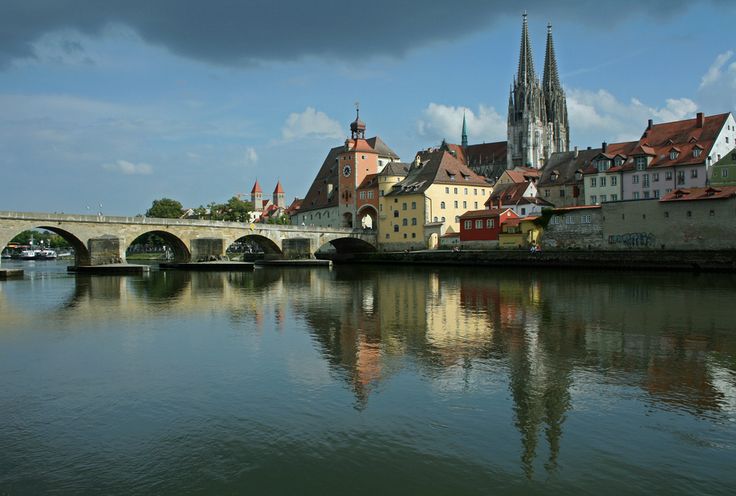
Regensburg is a small city that can easily be toured in a full day. Visitors can enjoy magnificently preserved historic buildings, narrow medieval streets and a pleasant walk along the Danube.
Founding of the City of Regensburg and Brief History
Located at the northernmost bend of the Danube river, Regensburg was an important military and trading center. There are traces of Celtic settlements around Regensburg dating back to the 5th century, BC. A stone tablet (now housed in the city museum) indicates that a Roman fort was established in 179 AD during the reign of Marcus Aurelius, then emperor of the Roman Empire. The area of the fort now comprises the oldest, central part of the city.
From the 6th century to the middle of the 13th century, Regensburg was the capital of Bavaria and also served as a bishop’s seat. In 1146, a stone bridge was completed over the Danube in Regensburg, which opened up a major trade route between southern Germany and Northern Europe. The city enjoyed a long period of prosperity as a result and became the second largest city in Germany, after Cologne.
From 1245 to 1803, Regensburg was a Free Imperial City under the Holy Roman Empire, meaning that it was ruled directly by the emperor and not a provincial leader. For part of this time (1663-1803), it was also the seat of the Reichstag (or Imperial Diet) of the Empire. With the collapse of the Empire in 1806, Regensburg was ceded to Bavaria.
Unlike many other German cities, Regensburg suffered little damage during World War II, enduring only one major air raid.
In 2006, the old city center of Regensburg was declared a UNESCO World Heritage Site due to its historical importance and the remarkable number of well-preserved historic structures.
Regensburg Today
Regensburg is now a thriving small city of approximately 140,000 and a major university town with around 25,000 students. It hosts a number of small and large high-tech and industrial firms such as BMW, Siemens, Infineon and Continental Brakes.
It remains a popular tourist destination, particularly for visitors to Munich, which is 76 miles (123 km) south.
Tour Highlights of Regensburg
To see the sights of Regensburg, a perfect first stop is a climb up the bell tower of Holy Trinity Church (Dreieinigkeitskirche) for a great bird’s eye view of the city and the spires of St. Peter’s Cathedral (Dom St. Peter).
From there, it is a 6-block walk through the medieval town streets to Regensburg’s biggest monument, the Cathedral. Started in the 13th century, the Dom took centuries to complete, and it is considered the finest example of German Gothic architecture in Bavaria. Just near the Dom is Porta Praetoria, part of the Roman-era fortifications that comprised the original part of the city.
Visitors should visit the Altes Rathaus (Old Town Hall) and the charming Rathausplatz before heading 2 blocks to the banks of the Danube. There, sightseers should walk over the pedestrian-only Old Stone Bridge to get a view of the old city from the other side of the Danube. There is also a lovely park on the island in the middle of the river that is perfect for a stroll.
Just near the start of the bridge on the old city side is the Wurstkuchl, a small restaurant that considers itself the oldest sausage stand in the world, dating back to the 12th century.
Visitors should not miss the Thurn & Taxis Palace on the southern end of the city. The guided tour through this lavish residence and cloisters takes about 90 minutes.


